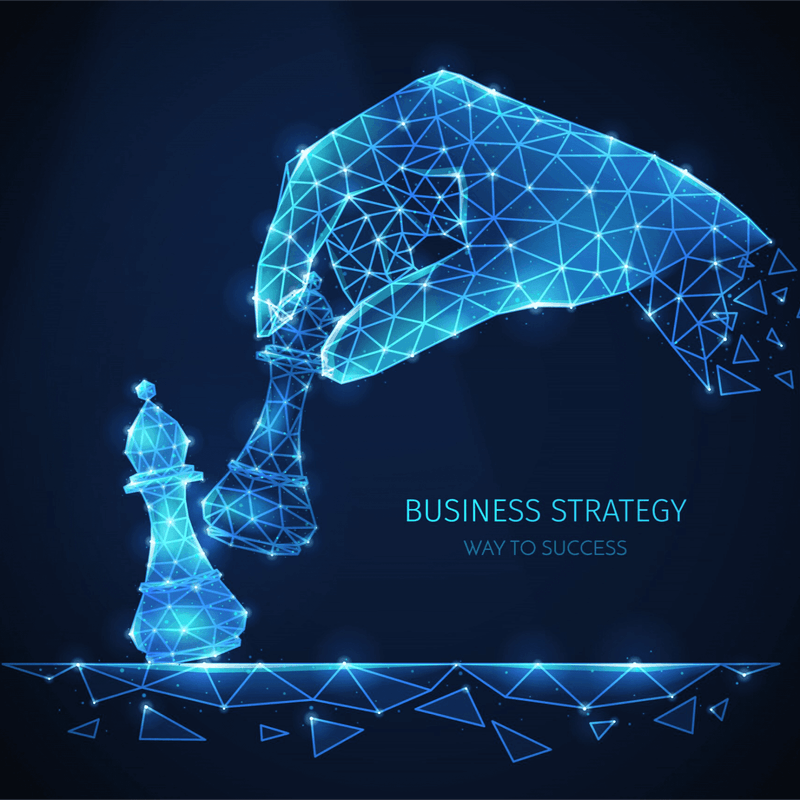
BUSINESS CONSULTING
27 May 2025
5 Supply Chain Strategies: Which Is Best for Your Business?
When it comes to global business, your company’s supply chain can make a significant difference to success. These invaluable collaborations impact your ability to serve consumers, function efficiently, and compete in the international landscape. Supply chain strategy enables you to align logistics, production, sourcing, and distribution in ways that bolster your cross-border operations.
Supply chain strategy shouldn’t be confused with supply chain operations, though. While operations refers to the day-to-day activities of your system, strategy relates to higher-level structure and management of operations. It’s the framework of tactics that act as the foundation for efficiency, scalability, and long-term planning among all chain partners.
International market entry and operations can be complex, making good strategy essential. So, we’ve put together this guide focusing on global logistics considerations.
What Is a Supply Chain Strategy?
Supply chain strategy is a plan that details a business’ long-term approach to how products and services get from their point of origin to the consumer. This includes how it sources raw materials, the manufacturing process, the warehousing and inventory management methods, logistics and shipping protocols, and final distribution.
A great deal of consideration needs to go into choosing an approach that aligns operations with the business’ goals, whether you’re going it alone or using business consultant services. After all, a solid strategy can influence consumer expectations — from product quality to efficient delivery — and ensure responsiveness to unexpected changes in market conditions.
Strategy 1 – Agile Supply Chain
The agile supply chain model is a route global businesses tend to take when a high degree of responsiveness is a priority. It features diverse supplier relationships and flexible inventory volumes, which can help companies in fast-moving environments or unstable market conditions pivot quickly and cost-effectively. Indeed, if there are disruptions due to extreme weather or geopolitical instability, agile supply chains can respond well.
Alongside being common in industries that see frequent demand variability — like fashion or consumer goods — this strategy offers the flexibility that aligns well with businesses offering custom products.
While flexibility and responsiveness can be useful in unpredictable markets, the downsides can include higher infrastructure setup costs.
Strategy 2 – Lean Supply Chain
Lean supply chain models are geared toward efficiency in all areas. This approach prioritizes waste reduction processes, just-in-time inventory practices, and optimizing operations to reduce costs while still providing value to consumers.
This is particularly effective for businesses operating in cost-sensitive sectors where profit margins can be quite tight. Lean chains are prevalent in the automotive industry, as they align well with stable consumer demand and relatively predictable production cycles.
The primary benefits of this approach are healthier budgets and potentially more sustainable operations. However, this reliance on predictability means issues anywhere in the chain can cause disruption throughout.
Strategy 3 – Continuous Flow Supply Chain
Continuous flow systems ensure output proceeds at a steady and consistent pace. There are solid chain partners in place, all delivering standardized service with little to no fluctuation. As efficiency and reliability are priorities here, this model tends to be most effective in mature industries that provide essential products to well-established consumer bases that are unlikely to change in the short-term.
Chemical goods, food and beverage products, and industrial manufacturing are good fits for this model. This is because these businesses often have low item variety and consistently high volume output that ensures predictability.
The pros of this strategy are its cost-effectiveness and reliability. However, it does lack flexibility, meaning that companies using this model can struggle to respond to market changes and demand fluctuations.
Strategy 4 – Fast Supply Chain
The fast supply chain prioritizes speed, achieved by reducing traditionally lengthy processes. For instance, standardizing production to remove variance and automating repetitive activities to reduce lead times. Many fast chains use near-shore supply chain partners to optimize logistics and shipping.
This model is often well-suited to high-turnover businesses, like fast fashion, electronics, and other trend-influenced industries. While fast supply chains can help capture market opportunities, the focus on speed can result in higher costs and more complex operational coordination.
Strategy 5 – Custom-Configured Supply Chain
The custom-configured model is among the most flexible supply chain strategies in the global marketplace. In essence, it’s a hybrid of the various other supply chain models, intended to meet the needs of companies providing customizable products. It combines production, assembly, and warehousing of bulk-ordered standardized components with late-stage customization options. This last step is usually performed close to delivery in order to optimize logistics and service. As a result, it’s an effective option for companies that allow consumers to configure or tailor products, such as computer hardware, industrial machinery, and consumer goods.
This hybrid approach is beneficial for its scalability and potential for high customer satisfaction. Yet, it also requires fine-tuned and complex coordination between chain partners and can be relatively costly to execute well.
Supply Chain Strategy Examples
To adopt the most relevant model, it can be helpful to review a few supply chain strategy examples that illustrate their application.
Fast Supply
A global fashion retailer needs to alter its inventory based on emerging trends and provide these to retailers and consumers before the trend passes. It uses the fast supply model, gathering data to identify likely demand directions, and instructs its team to rapidly design and prototype items. It provides designs to its flexible manufacturing partners, who can switch production priorities quickly, and ship to warehouses or stores within a matter of weeks.
Continuous Flow
An electronics company provides core components — such as microchips — to a mature global B2B client base. The clients expect consistent quality, quantity, and delivery frequency, and the item itself doesn’t change much over time. The electronics firm uses the continuous flow model, using standardized manufacturing processes and fine-tuned logistics to ensure predictable and steady output to various locations throughout the world.
Lean Supply
A logistics firm serves small businesses and startups that don’t have the capital for bloated supply chains or expensive storage. It adopts a lean supply chain strategy to minimize unnecessary steps in the production, logistics, and delivery processes. This includes implementing real-time data analytics, warehouse consolidation, and route optimization tools. This helps to reduce overall costs, meeting clients’ needs and boosting profits on otherwise tight margins.
Choosing the Right Strategy for Your Business
The supply chain management strategy you choose should fit the needs of your business, rather than the other way around. While it’s useful to select the right model early on, it’s also vital to take a flexible approach that enables your brand to be agile enough to make changes in line with your long-term plans.
Some of the elements to evaluate when making your choice include:
- Business model – Consider each strategy’s alignment with your overall business model. Is speed, cost, customization, or reliability most impactful?
- Product type – Your products might dictate the most appropriate strategy. Highly tailorable items may require a custom-configured approach.
- Customer expectations – What are your customers’ needs and priorities? Each strategy features different elements that impact consumer satisfaction and retention.
- Global distribution – Some models are more compatible with complex cross-border regulations and logistics than others. You should apply the requirements of your target jurisdictions when making your decision.
- Market conditions – Volatile markets, especially in areas with political or economic instability, can affect how reliable the supply chain is. These areas may require more flexible strategies.
Global Considerations for Supply Chain Management
Global operations can add layers of complexity to supply processes. There are challenges around inconsistencies in customs processes, risks of currency fluctuation impacting profit margins, diverse regional regulations to plan for, and you may find logistics infrastructure to be dependent on location. At the same time, there are vast opportunities to leverage lower-cost international partnerships, benefit from more diverse data exchanges, and access fresh markets.
Bear in mind that navigating challenges and leveraging opportunities globally may require a blended or evolving strategy. The different international markets you serve may require slightly tailored approaches or adaptable protocols that fit the nuanced infrastructures available or market conditions.
FAQs
What is a supply chain strategy?
This refers to the long-term plan for managing the process of moving goods and services from production to consumers. Different strategies support various types of business goals and market conditions.
Why are supply chain strategies important?
The structured and fine-tuned nature of these strategies can reduce business’ costs, boost reliability, enhance consumer satisfaction, and provide a competitive edge in the evolving global marketplace.
Can a business use more than one supply chain strategy?
Yes. Actually, in some circumstances implementing different strategies for your various products and territories or even a blend of models is more suited to a firm’s specific logistical or market needs.
How often should I review my supply chain strategy?
Frequent reviews are recommended, either yearly or after any major operational, regulatory, or market shift to ensure continued relevance.
What role does technology play in supply chain strategy?
Technological tools support forecasting, inventory control, real-time tracking, operational integration, and communication throughout departments and global locations. This ensures the continued efficiency and agility of the supply chain.
References
Shasi, P. (2020, October). Agile supply chain management: where did it come from and where will it go in the era of digital transformation? Science Direct.
https://www.sciencedirect.com/science/article/abs/pii/S0019850119311095
Nutburn, M. (2019, June 12). The Benefits of a Lean Supply Chain. British Assessment Bureau.
MyNZTE. (2025, February12). Which supply chain strategy is right for my business? MyNZTE.
https://my.nzte.govt.nz/article/which-supply-chain-strategy-is-right-for-my-business

Business Consulting
27 May 2025
What Is a Market Entry Strategy?
At some point, every successful business makes a push for growth. One way to do this is by exploring new geographic or sector-specific markets. A market entry strategy provides a clear, well-structured roadmap connecting businesses to fresh opportunities. A market entry strategy isn’t just good for localized approaches — it’s particularly relevant to effective global […]

Legal And Compliance
26 May 2025
How to Choose a Compliance Provider: 11 Questions to Ask
Choosing the right compliance solution is a decisive process for companies eager to operate internationally. Compliance providers are companies or consultants experienced in international jurisdictions, regulatory compliance, and legal support. They help companies meet industry standards and stay compliant with ever-changing regulations. This article provides specific guidance on how to choose a compliance provider—like Ascot […]

Business Consulting
26 May 2025
What Is Business Strategy & Why Is It Important?
No matter the industry, size, or market—every business needs a clear vision to grow and generate profits. Business strategy is the long-term plan that companies follow to achieve their goals, such as market share, revenue, or cost reduction. In this article we will find out why the right strategies steer international companies toward successful paths. […]

